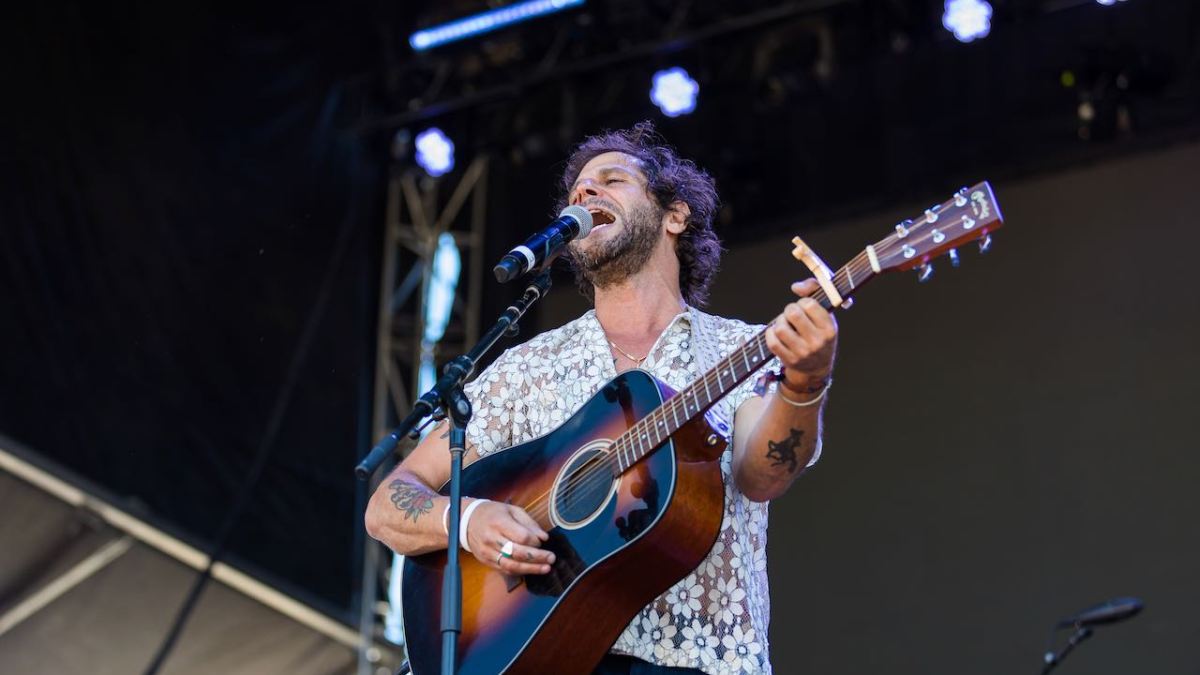HOME PAGE | PANCHO STAGE | LEFTY STAGE
LOS ANGELES, CA-
“… Oh dear, Langhorne. A man of my heart. If you have half an hour, please listen to his interview on NPR. The dude is so fascinating and honest, and he has a magical way of making the darkness of his own radical experience feel relatable to those of us who suffer the more pedestrian trials and tribulations of civilian life. Which is why I think he works so well live.
It begins with the music; he crushes it straight out of the gates. From moment one, a mad frenzy of keyboards and drums launch the afternoon into a delightfully controlled chaos that’s held on course by the reckless but perfect beauty of his vocals. Vocals drenched in celebratory angst; a proverbial wall of sound, a sonic rainbow – both auditory and visual – that shoots from the microphone, ricochets off your earhole, and lands somewhere between the nadir of your bowels and the apex of your heart. He elevates. And yet… he wants to relate. He wants to connect. He wants to annihilate the inherently hierarchical structure that’s baked into live performance: artist above, audience below; artist in the light, audience in the dark. No, that’s not Langhorne.
For him, artist and audience is we and us, not us them. That’s why he can’t be more than a song or two into his set before he leaps down from the stage to sing to the crowd, from the crowd. In a moment between songs, his voice cracks in ecstatic agony: “Music is the most divine medicine we have … to share and lift our souls.” Can’t tell if he’s telling us or pleading with us. And it’s a soundbite that might sound cliche from any other artist but certainly not from Langhorne and certainly not now. Not when it’s possible that anywhere from 30 to 60% of THIS crowd on THIS day, is at their first music festival — possibly their first concert — in upward of three years. It’s a message that hits hard in what for many has been an emotionally hard time.
Oftentimes I’m looking for a sensei in my artists. A guide to follow. In Langhorne, not so much. Instead, I see a friend. A man to hug because, dammit, we all need one … to embrace as an equal; who’s been through a lot more of some shit, and a little less of some other. That’s in part because there’s an uncertainty that feels very conscious during his performance where it’s unclear whether he’s sharing his pain or reflecting your own. Either way it works because he’s flattened the landscape between you and him. He’s stepped down from the pedestal. Even in his reflections on sobriety, there’s an awareness of communal ethos.
“I’m not against booze and drugs … but wanna leave some for you, because I was doing them …ALL.” His story is your story is our story, albeit different degrees of intensity. Can’t say I’ve ever tried to do ALL the drugs. But his impulse control and the hurt behind it — a hurt that drove him all the way to LA, only to realize when he ran out of land that he was still just himself but “in a sunnier place”. Well… count yourself lucky (or in denial) if you never struggled with something akin to that. As he walks his anthems of pain, joy, and sadness straight into the middle of the crowd, the audio and the visual begin to integrate with the tactile. One hand on a shoulder, one hand on the mic. My shoulder, your shoulder, our shoulder. Oof, that third dimension of sensory experience is so powerful when done properly, from the heart. When he screams “I ain’t dead” could it be anywhere else but from the middle of the crowd, a horde of heartbeats, holding and being held by the audience around him?…”
Follow Langhorne Slim on Facebook, Twitter and Instagram.
HOME PAGE | PANCHO STAGE | LEFTY STAGE
*********************
LIVE CLIPS
HOME PAGE | PANCHO STAGE | LEFTY STAGE






























